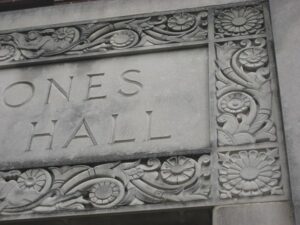There is a disturbing trend developing around debt incurred by publicly funded institutions. In short, the pandemic has financially destabilized publicly funded institutions that are carrying lot of debt. This privately funded public debt is risky because it can force institutions to take some previously unthinkable measures. Public institutions can run into serious financial challenges when they try to carry significant privately funded debt loads.
Tower Health, Philadelphia, PA
“Tower Health, buckling under a massive debt load and huge losses over the last two years, will consider selling all six Philadelphia-area hospitals that the Berks County nonprofit has acquired since 2017, Tower officials told municipal bond investors Tuesday. … Three years ago, Tower embarked on a risky expansion, first borrowing money to buy five community hospitals in Southeastern Pennsylvania for $423 million, then paying $24 million for a chain of urgent-care centers, and last year contributing $29 million toward the $58 million purchase of St. Christopher’s Hospital for Children in a 50-50 joint venture with Drexel.”
Clark County, NV
“While the Las Vegas Raiders plot to stop Matt Ryan and Julio Jones in Atlanta on Sunday, Nevada officials are scrambling to avoid defaulting on the NFL team’s stadium. Clark County floated $645 million in bonds to help fund the construction of the Raiders’ state-of-the-art Allegiant Stadium. Less than two years after issuing the bonds, a steep drop-off in tax revenue means that taxpayers have had to draw funds from a reserve account to make the pending Dec. 1 bond payment of $16.06 million. The county disclosed today that it has pulled $11.55 million from a rainy day account—specifically, the Reserve 2018A Bond Proceeds Subaccount—leaving $57.28 million left in the bond’s reserve account.”
Passaic County Community College, Paterson, NJ
“PATERSON — Passaic County Community College’s president isn’t bothered in the slightest by the school’s debt rating downgrade. Last week’s downgrade from Moody’s Investors Service on $11.8 million in short-term debt was coupled with a negative rating outlook for the college, which operated at a deficit of 7% last year, records show. College President Steven Rose said the school is being downgraded for not having enough money in the bank, and he wouldn’t want it any other way. “That’s not our goal,” Rose said. “Our goal is to keep tuition as low as we possibly can for our students.””
University of Toledo, Toledo, OH
“There are more financial issues for the University of Toledo as one of the nation’s major bond agencies has downgraded the school and listed UT as having a negative financial outlook. This is just the latest report of money problems the school is having. The University of Toledo Medical Center is in the red with losses of nearly $15 million dollars through February. The school is also looking at layoffs and furloughs amid the COVID-19 pandemic, in part coming from major cuts in state aid to the tune of $4 million. “… “Of the 10 Ohio public universities Moody’s rates, only 2 others have negative outlooks, Shawnee State and Wright State. “
The theme here is that losses are mounting for public institutions that borrow heavily, or that engage in risky or speculative moves. There’s never a good time to gamble with the public’s money, but right now, that game is proving to be especially unfortunate for those who do.
It’s not clear how long the pandemic will last, or how long it will take for public institutions to recover from it. But debt repayment doesn’t go away just because the borrower’s circumstances change. In fact, bad economic turns can hasten the conditions that bring about default conditions.
Private lenders, public debt
Worse, uncertain economic outlooks give private lenders all the ammunition they need to ratchet up pressure to repay public debt. Bondholders fund certain endeavors because they expect to gain a specific return on their investment. When the borrower doesn’t meet those expectations, the consequences can be devastating.
Earlier this year, Inside Higher Ed took a close look at the sudden decision to close Concordia University Portland, a private Lutheran university, earlier this year. The school’s debt and bondholders’ expectations played a critical role in the decision to shutter the campus.
Concordia University Portland partnered with an online education partner with questionable recruiting techniques. The online partner’s sketchy tactics weren’t the problem; rather, the bondholders were upset that the questionable recruiting tactics didn’t work well enough.
The Community College Option
Community colleges never have to turn to private lenders for money. The sane person would argue that they never should use private financing for public projects.
Unlike public or private universities, community colleges can ask the voters to authorize a special tax to repay debt. When community colleges use this mechanism, they pay lower interest rates because their default risk is virtually non-existent. Further, they don’t risk their current financial position because they don’t have to divert operating funds to debt retirement.
It is only when publicly funded institutions engage in speculation that the potential for financial disaster increases. Bondholders don’t care whether the pandemic has affected enrollment, or dormitory occupancy or any other condition on campus. They just want their money. And if it looks like they may not get their money, they can exert enormous pressure on borrowers.
Right now, Washtenaw Community College engages in this kind of speculative borrowing to fund construction projects on campus. This approach to financing successfully avoids the voters’ denial. But it also eliminates institutional flexibility to save and spend in the manner that is best and least costly for the institution. It prioritizes public debt repayment over every other expense. The school’s mission changes from educating students to generating income for investors.
Now is not the time for taking risks with public funds. But then again, there’s no really good time to lose public money on speculative ventures. Doing so courts financial disaster and betrays the public mission of the College.
Photo Credit: Rich Brooks, via Flickr




























